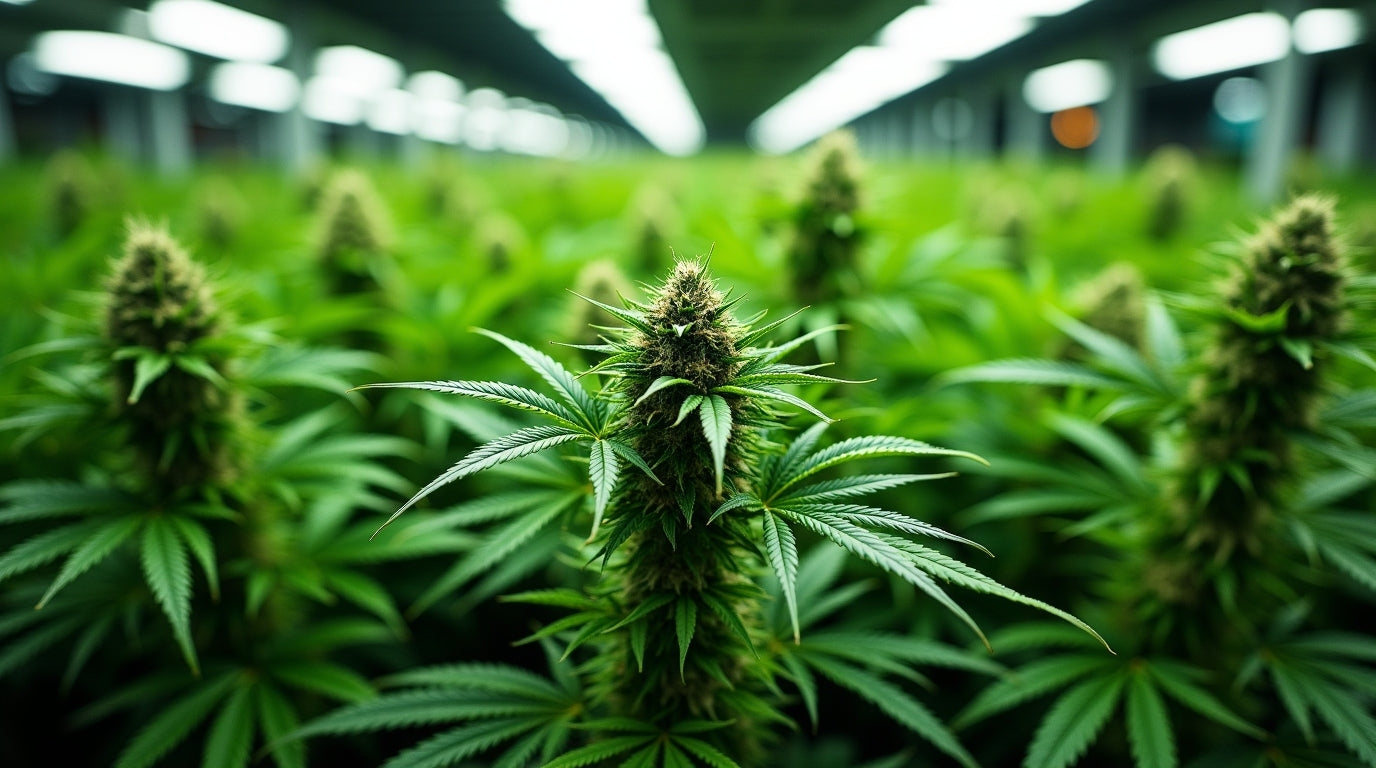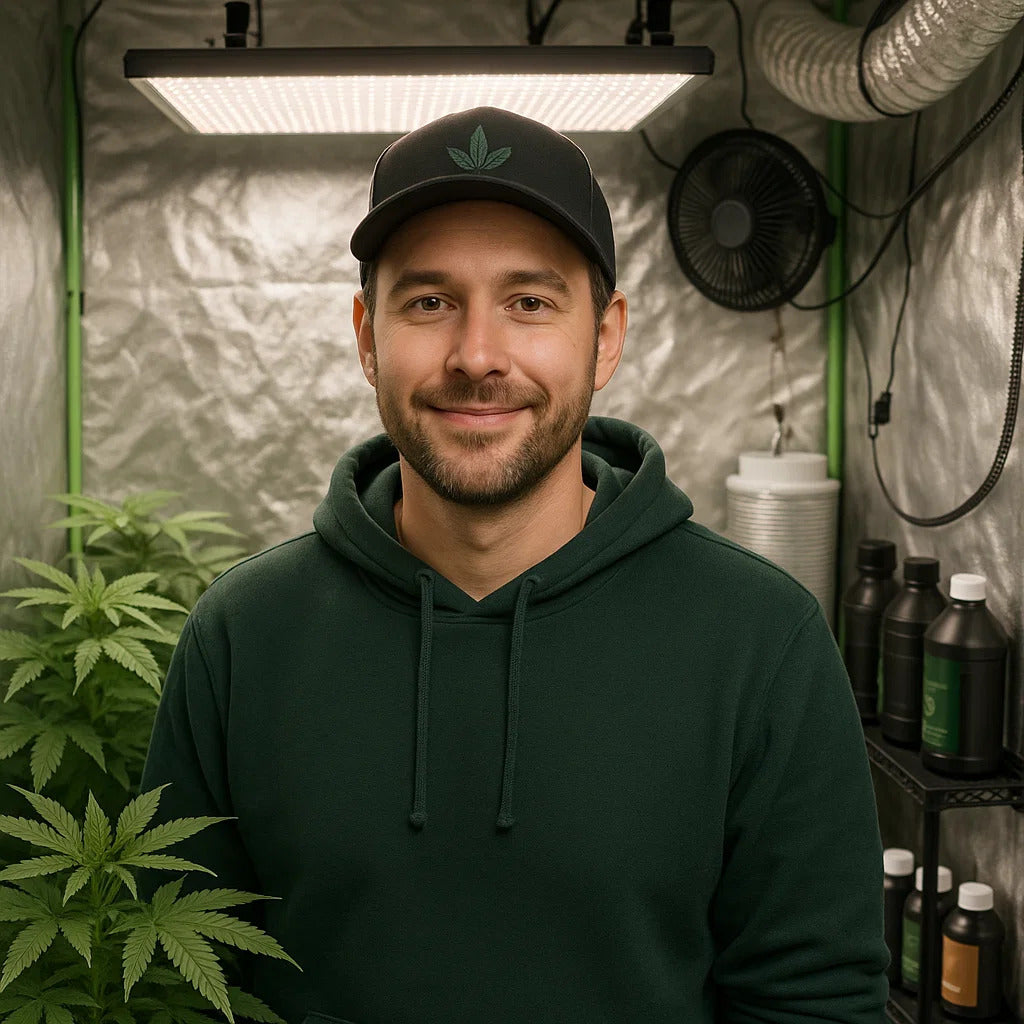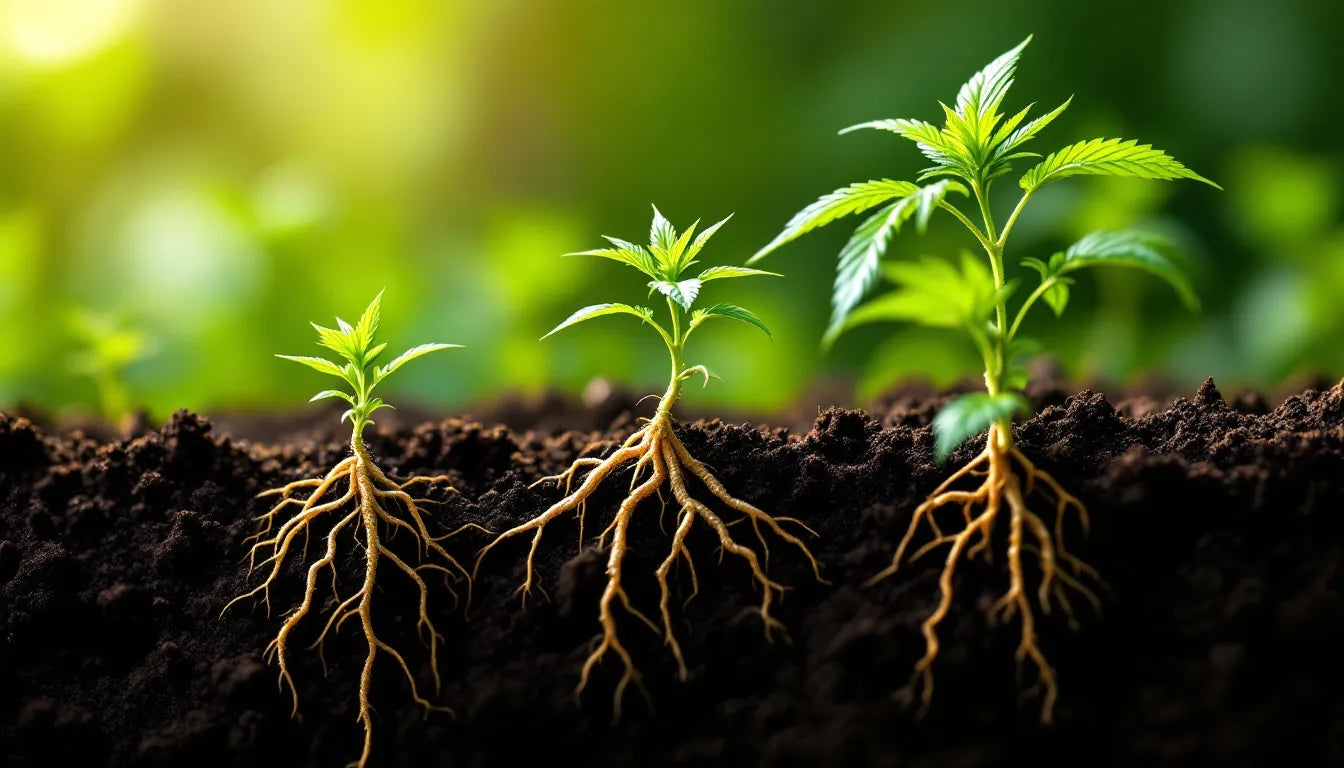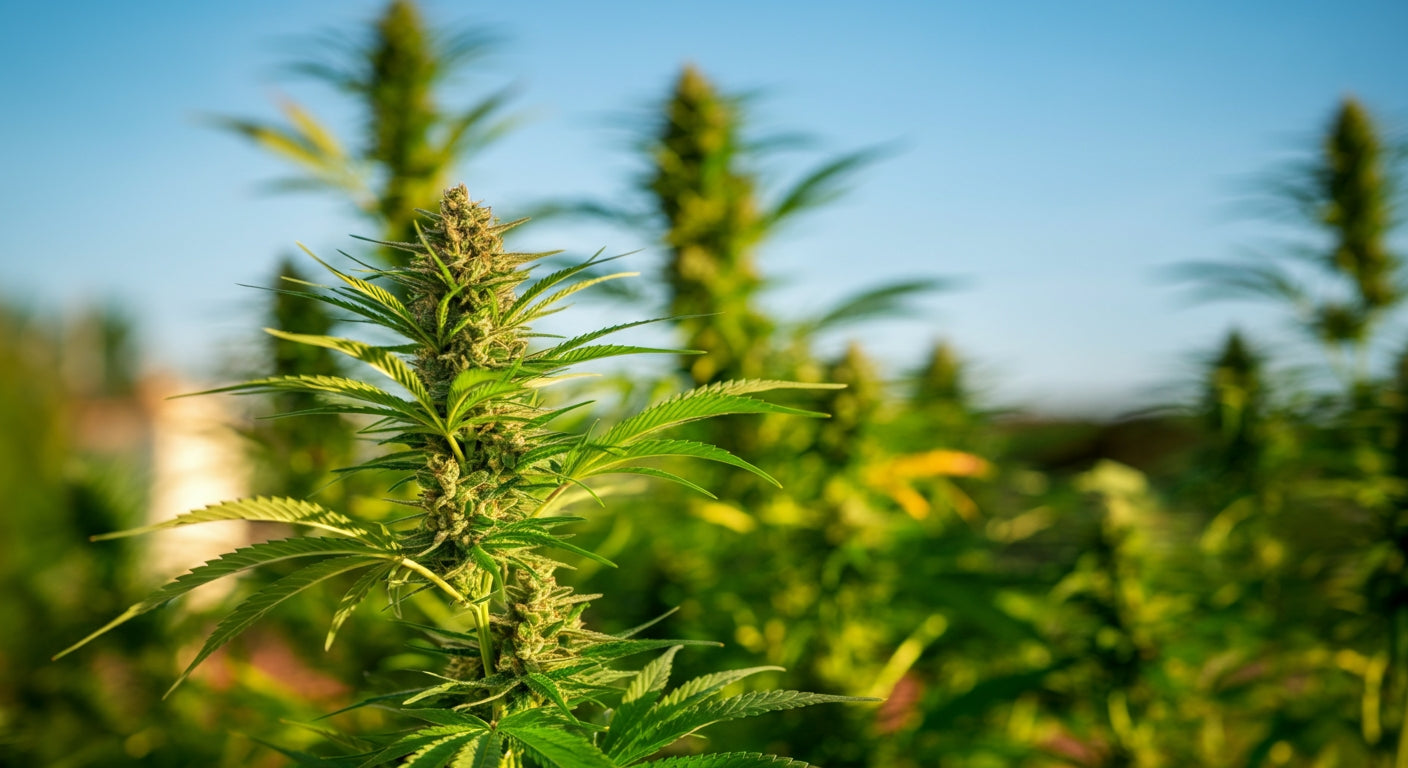
How to Grow Weed in the House: Complete Indoor Cannabis Cultivation Guide
Growing cannabis indoors at home offers complete control over your plants' environment, allowing for year-round cultivation regardless of climate or season. Indoor growing provides privacy, security, and the ability to produce consistent, high-quality results through precise environmental management.
This comprehensive guide covers everything you need to know about setting up a successful indoor cannabis operation in your home, from choosing the right location to harvesting premium buds. Modern indoor growing equipment makes home cultivation more accessible and efficient than ever before.
Important Legal Note: Only grow cannabis where it's legally permitted. Always check your local and state laws regarding home cultivation limits, licensing requirements, and compliance regulations before beginning any growing operation.

Choosing the Perfect Indoor Growing Location
Evaluating Your Home Spaces
The ideal indoor growing location provides adequate space, electrical access, ventilation possibilities, and privacy. Common locations include spare bedrooms, basements, closets, garages, and dedicated grow rooms.
Consider ceiling height, as cannabis plants can grow 3-6+ feet tall depending on strain and training methods. Professional grow tents come in various heights to accommodate different spaces and plant training techniques.
Evaluate electrical capacity carefully, as indoor growing requires significant power for lighting, ventilation, and climate control systems. Consult an electrician if upgrading electrical service becomes necessary.
Climate Control Considerations
Indoor growing spaces need consistent temperature and humidity control. Basements often provide stable temperatures but may require dehumidification, while attics can experience extreme temperature swings requiring more robust climate control.
Quality grow tent systems create controlled microclimates within larger spaces, making almost any location suitable for growing with proper equipment and environmental management.
Ventilation and Odor Management
Plan ventilation routes for fresh air intake and exhaust before setting up equipment. Carbon filtration systems eliminate odors completely, but exhaust air still needs somewhere to go.
Professional ventilation systems include carbon filters, inline fans, and ducting designed to integrate seamlessly with home HVAC systems when necessary.
Essential Equipment for Indoor Home Growing
Grow Tent Setup
Complete grow tent systems provide everything needed for successful indoor cultivation while containing the operation within a designated space.
Gorilla Grow Tents feature industrial-grade construction with 1680D fabric that's 9x thicker than standard tents, ensuring complete light control and long-term durability for serious home growers.
Tent sizes range from compact 2x2 feet for single plants up to spacious 8x8 feet for larger operations. Choose tent size based on your space, plant count, and yield goals.
Lighting Systems
LED grow lights have become the gold standard for indoor cannabis cultivation due to their efficiency, spectrum control, and lower heat output compared to traditional lighting.
Calculate approximately 35-50 watts per square foot for LED lighting. A 4x4 tent requires 560-800 watts of quality LED power for optimal results and maximum yields.
Modern LED systems include dimming controls, spectrum adjustment, and programmable timers that optimize plant development throughout different growth stages automatically.
Ventilation and Air Quality
Proper airflow prevents mold, controls temperature, and provides fresh CO2 for photosynthesis. Install intake and exhaust fans sized appropriately for your growing space volume.
Carbon filters eliminate odors completely while inline fans move air efficiently through your system. Professional ventilation kits include properly matched components for optimal performance.
Calculate air exchange requirements based on tent volume – most systems should exchange the entire air volume every 1-3 minutes during peak operation.
Climate Control Equipment
Temperature and humidity control become critical for indoor success. Environmental monitoring systems track conditions continuously and alert you to problems before they impact plant health.
Maintain temperatures between 70-85°F (21-29°C) with relative humidity levels of 40-60% depending on growth stage. Seedlings prefer higher humidity while flowering plants require lower levels.

Indoor Growing Methods
Soil Growing for Beginners
Soil growing offers the most forgiving approach for new indoor growers. Quality potting soil provides natural nutrients and beneficial microorganisms that support healthy plant development.
Organic soil mixes designed for cannabis provide excellent drainage while retaining adequate moisture for consistent plant growth throughout all development stages.
Soil growing requires less precise monitoring than hydroponic systems while still producing excellent results when combined with proper lighting and environmental control.
Hydroponic Systems
Hydroponic growing delivers nutrients directly to roots through water-based solutions, often producing faster growth and higher yields than soil methods.
Deep Water Culture (DWC) systems work excellently for indoor home growing, providing rapid growth while remaining relatively simple to manage compared to more complex hydroponic methods.
Advanced growing techniques like hydroponics require more attention but can significantly increase yields and reduce growing times when properly implemented.
Container Size and Plant Numbers
Container size directly impacts final plant size and yield potential. Larger containers support bigger plants but require more space and resources per plant.
Most home growers find 3-7 gallon containers optimal for balancing plant size with space efficiency. Strategic plant training maximizes yields regardless of container size chosen.
Nutrition and Feeding Programs
Understanding Cannabis Nutrition
Cannabis requires different nutrient ratios during vegetative and flowering stages. Vegetative growth demands higher nitrogen levels, while flowering requires increased phosphorus and potassium.
Professional cannabis nutrients are specifically formulated for indoor cultivation, providing optimal nutrition ratios for each growth stage without complicated mixing calculations.
Monitor plants daily for signs of nutrient deficiencies or toxicities. Indoor growing allows precise control over nutrition, but this also means problems can develop quickly without proper attention.
Feeding Schedules
Start with nutrient concentrations at 25-50% of manufacturer recommendations, gradually increasing based on plant response and development stage requirements.
Cal-Mag supplements become particularly important for indoor growing, especially when using LED lighting or certain growing media like coco coir.
Maintain detailed feeding logs to track what works best for your specific strains and growing conditions. This information becomes invaluable for optimizing future grows.
pH and Water Management
Monitor pH levels regularly using digital pH meters for accurate readings. Soil growing requires pH between 6.0-7.0, while hydroponic systems prefer 5.5-6.5.
Water quality affects nutrient uptake significantly. Consider using filtered or reverse osmosis water if your tap water contains high mineral levels that interfere with feeding programs.
Growth Stages and Management
Germination and Seedlings
Start seeds using paper towel method or directly in growing medium. Maintain temperatures around 75-80°F (24-27°C) with high humidity for optimal germination rates.
Young seedlings require gentle conditions with moderate lighting intensity. Gradually increase light levels as plants develop their first true leaves beyond initial cotyledons.
Proper seedling care in controlled indoor environments significantly improves survival rates and establishes strong foundations for healthy plant development.
Vegetative Growth
During vegetative growth, maintain 18-24 hours of daily lighting to prevent premature flowering. This stage typically lasts 4-8 weeks depending on desired final plant size.
Implement training techniques like LST (Low-Stress Training) and topping during early vegetative growth to manage plant size and maximize yields within limited indoor space.
Flowering Stage
Flowering begins when you switch to 12 hours light/12 hours darkness daily. Maintain complete darkness during dark periods to prevent flowering disruption and hermaphrodite development.
Reduce humidity levels during flowering to prevent mold and bud rot. Environmental control systems help maintain optimal conditions throughout the critical flowering period.
Plant Training for Indoor Spaces
Low-Stress Training (LST)
LST involves gently bending and securing branches to create even canopy heights and increase light exposure to more flowering sites without stressing plants significantly.
Start LST during early vegetative growth when branches are flexible. Use soft plant ties or LST clips to gradually shape plants for optimal light distribution.
Screen of Green (SCROG)
SCROG uses horizontal screens to create even canopies while supporting heavy flowering branches. This technique works exceptionally well in indoor grow tents with limited vertical space.
Install SCROG screens during vegetative growth, weaving branches through openings as plants develop to maximize light penetration and support structure.
Topping and Pruning
Topping involves cutting the main stem to encourage bushier growth with multiple main colas instead of one central stem. Perform topping during vegetative growth to allow recovery time.
Remove lower branches that receive insufficient light to focus plant energy on productive upper growth receiving direct lighting.
Environmental Control and Monitoring
Temperature Management
Maintain consistent temperatures throughout the growing cycle. Install multiple thermometers at different heights to monitor temperature variations within your growing space.
Climate control equipment includes heating and cooling systems designed to maintain optimal temperatures regardless of external conditions.
Humidity Control
Humidity requirements change throughout the growing cycle. Use humidifiers during early growth stages and dehumidifiers during flowering to maintain optimal levels.
Monitor humidity levels continuously, as rapid changes can stress plants and create conditions favorable for mold and pest development.
Air Circulation
Install oscillating fans to provide gentle air movement throughout your growing space. This strengthens stems while preventing stagnant air conditions that harbor problems.
Ensure air circulation reaches all plant areas, including lower branches and soil surfaces where fungal issues commonly develop in indoor environments.
Common Indoor Growing Problems
Light Burn and Heat Stress
Position lights at appropriate distances to prevent light burn while ensuring adequate intensity for healthy growth. LED lights can be positioned closer than traditional lighting.
Monitor plant responses to lighting changes, adjusting height and intensity based on plant development and environmental conditions.
Nutrient Issues
Indoor growing allows precise nutrition control but requires attention to prevent deficiencies or toxicities that can develop rapidly in controlled environments.
Balanced nutrition programs prevent most common problems while providing optimal plant nutrition throughout all growth stages.
Pest Management
Indoor growing reduces pest pressure compared to outdoor cultivation, but spider mites, fungus gnats, and other issues can still occur.
Maintain clean growing environments and inspect plants regularly for early pest detection when problems are easier to control and eliminate.
Environmental Fluctuations
Unstable environmental conditions stress plants and reduce yields. Professional monitoring equipment helps maintain consistent optimal conditions.

Security and Discretion
Odor Control
Carbon filtration eliminates odors completely when properly sized and maintained. Replace carbon filters according to manufacturer recommendations for continued effectiveness.
Professional odor control systems ensure your indoor growing operation remains completely discrete and undetectable to neighbors.
Electrical Safety
Ensure electrical systems can handle growing equipment loads safely. Use GFCI outlets in areas with water and moisture to prevent electrical hazards.
Consider dedicated electrical circuits for growing equipment to prevent overloading household electrical systems and ensure reliable operation.
Home Security
Secure growing systems with locking mechanisms prevent unauthorized access while maintaining discrete appearances.
Limit knowledge of your growing operation to maintain security and comply with local regulations regarding home cultivation.
Harvesting and Processing
Determining Harvest Timing
Use jeweler's loupes or digital microscopes to examine trichomes for harvest readiness. Clear trichomes indicate early harvest, cloudy shows peak potency, amber suggests sedative effects.
Most strains require 8-12 weeks of flowering before reaching optimal maturity, but trichome examination provides the most accurate harvest timing method.
Harvesting Process
Proper harvesting tools include sharp pruning shears, drying racks, and environmental control for processing areas.
Cut branches individually and remove large fan leaves immediately. Trim smaller sugar leaves either before or after drying based on preference and available time.
Drying and Curing
Maintain drying conditions around 60-65°F (15-18°C) with 45-55% humidity for 7-14 days depending on bud density and environmental conditions.
Cure dried buds in airtight glass jars, opening daily for the first few weeks to release excess moisture while developing optimal flavor and smoothness.
FAQ Section
How much space do I need to grow weed in my house? A 2x2 foot area can accommodate 1-2 plants, while a 4x4 space handles 4-9 plants depending on training methods. Various tent sizes fit different home spaces and growing goals.
How much does it cost to set up indoor growing at home? Initial setup costs range from $300-1500 depending on tent size and equipment quality. Higher upfront investment in quality equipment provides better long-term results and durability.
Will growing weed in my house increase my electricity bill? LED systems use approximately 300-800 watts depending on growing space size. Monthly electrical costs typically range from $30-120 based on local rates and system size.
How do I prevent neighbors from smelling my indoor grow? Professional carbon filtration systems eliminate odors completely when properly sized and maintained. Quality equipment ensures complete discretion for indoor operations.
What's the best room in my house for growing weed? Spare bedrooms offer ideal conditions with good climate control access. Basements provide stable temperatures, while closets work for smaller operations with proper ventilation planning.
Quick Indoor Growing Summary
Indoor home cannabis cultivation offers complete environmental control, privacy, and year-round growing potential. Success requires proper equipment, environmental monitoring, and attention to plant needs throughout all growth stages.
Start with quality equipment like professional grow tents and LED lighting for consistent results and maximum yields from your indoor growing space.
Ready to start growing indoors at home? Explore our complete selection of professional grow tent systems designed for successful home cultivation. Our complete growing kits include everything needed for indoor success. Check our latest deals to get started with premium equipment optimized for home growing.

Lena Myles
I'm a mushroom enthusiast and home cook based in Oregon. I'm passionate about foraging and creating fungi-focused recipes, especially delicious, plant-based dishes using gourmet mushrooms like trumpet, shiitake, and oyster. When I’m not in the kitchen, you’ll usually find me wandering the woods in search of new wild flavors.


